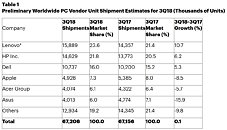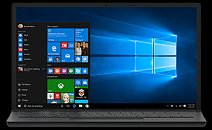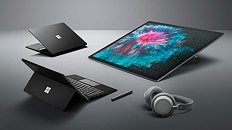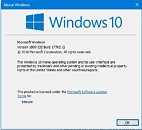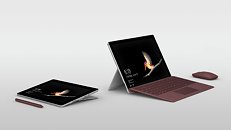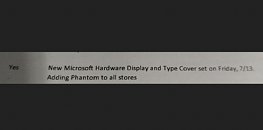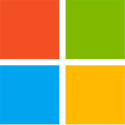
PC Shipments Were Flat in Q3 2018, and That's Good News. Also: Microsoft Surpasses Acer in the US
According to preliminary data published by Gartner, worldwide PC shipments totaled 67.2 million units in the third quarter of 2018, which marks a 0.1 percent increase from the third quarter of 2017. The study shows how the global market "has shown modest stability for two consecutive quarters" something quite impressive given that for some time now PC shipments have relentlessly decreased. Lenovo has surpassed HP and has secured the top spot driven by its joing venture with Fujitsu, says Gartner. Only those companies and Dell have managed to grow compared to the same quarter last year, while Acer, Asus, and Apple have reduced their shipments in this quarter.
Mikako Kitagawa, principal analyst at gartner, mentioned the possible impact of Intel problems in the short term: "the Intel CPU shortage could influence the PC market moving forward with price increases and changes to the vendor landscape. While this shortage will have some short-term impacts, Gartner does not see any lasting impact on overall PC demand." In fact, this analyst points out how Intel will prioritize high-end CPUs and business PCs CPUs, with AMD picking up if Intel cannot supply enough CPUs.
Mikako Kitagawa, principal analyst at gartner, mentioned the possible impact of Intel problems in the short term: "the Intel CPU shortage could influence the PC market moving forward with price increases and changes to the vendor landscape. While this shortage will have some short-term impacts, Gartner does not see any lasting impact on overall PC demand." In fact, this analyst points out how Intel will prioritize high-end CPUs and business PCs CPUs, with AMD picking up if Intel cannot supply enough CPUs.
